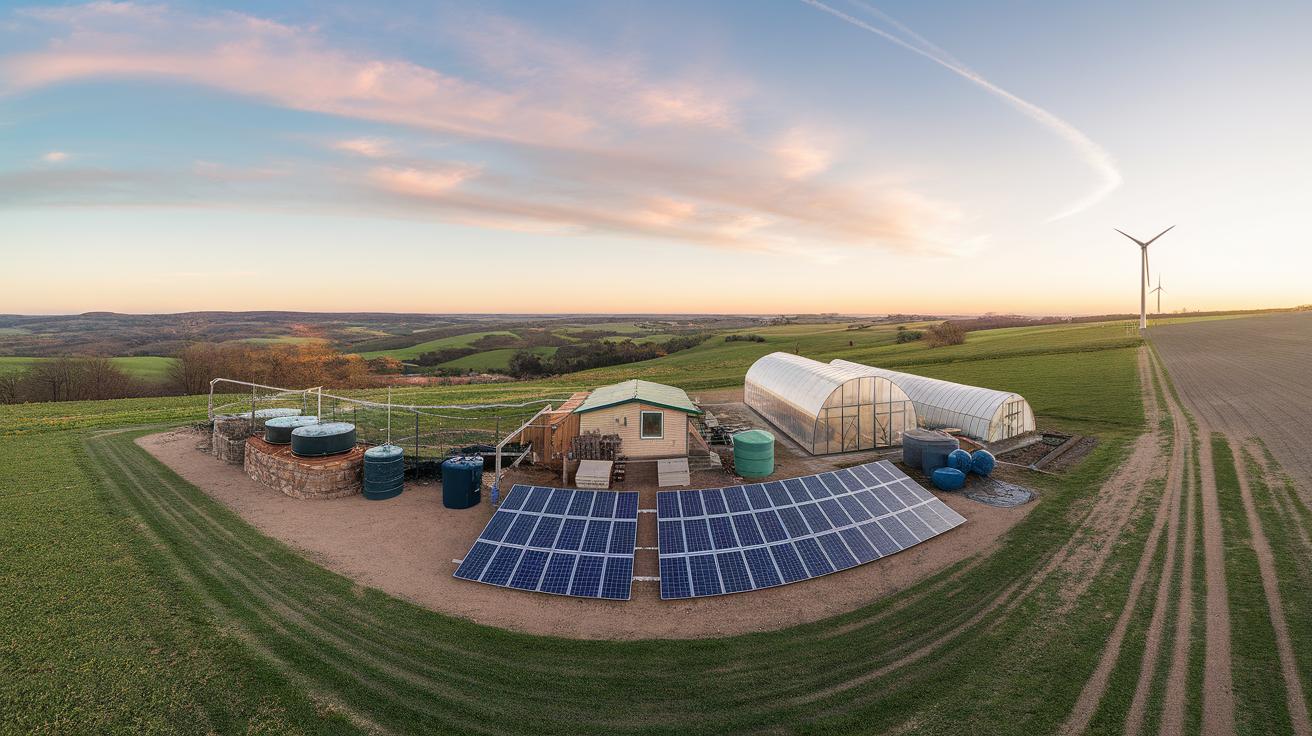Introduction
Solar power represents a transformative shift in how we generate and consume energy. This revolutionary technology harnesses sunlight, a renewable resource, converting it into electricity or heat. Solar panels and systems allow individuals and businesses to reduce their dependence on traditional energy sources, cutting costs and lowering carbon emissions. Solar energy solutions make it feasible for homes and communities to become more energy-efficient and environmentally friendly. This article explores the advantages, technologies, and practical applications of solar power, guiding you through understanding why it is essential in today’s world.
As we face increasing environmental challenges, the transition to clean energy becomes more crucial than ever. Solar power not only provides alternative energy but also encourages self-sufficiency and reduces reliance on fossil fuels. In this article, we will discuss various solar technologies, the benefits of adopting solar energy, its economic implications, and future possibilities. By the end, you will gain a comprehensive understanding of solar power solutions and their potential to shape a sustainable future.
Understanding Solar Energy Harnessing the Suns Power

Solar energy comes from sunlight, which is a renewable energy source that we can capture and convert into electricity. This process involves two main technologies: photovoltaics and concentrated solar power. Photovoltaics use solar panels made of special materials, like silicon, that convert sunlight directly into electricity. When sunlight hits these panels, they generate a flow of electricity that can power homes, businesses, and other applications.
Concentrated solar power takes a different approach. It uses mirrors or lenses to focus sunlight onto a small area. This concentrated heat can produce steam, which drives a turbine that generates electricity. Both technologies offer unique benefits and play a crucial role in promoting clean energy. Understanding these systems helps us recognize the importance of solar power in creating a sustainable future for everyone.
Benefits of Solar Power Revolutionize Your Energy with Solar Power Solutions

Environmental Advantages
Solar power offers significant environmental benefits that support a cleaner planet. By using solar energy, individuals and communities can reduce their reliance on fossil fuels, which release harmful gases into the atmosphere. Solar panels generate electricity without producing air pollution, helping to decrease greenhouse gas emissions. This shift to renewable energy sources promotes a healthier ecosystem, preserving biodiversity and reducing the harmful effects of climate change. Furthermore, harnessing the sun’s energy requires minimal water, making it a sustainable option in areas facing water shortages.
Financial Benefits
Adopting solar energy brings notable financial advantages for both individuals and communities. Homeowners who install solar panels can lower their monthly electricity bills significantly. Many governments offer tax incentives or rebates, making solar installations more affordable. Over time, these savings can accumulate, leading to energy independence and increased property value. Communities that invest in solar power can create jobs, stimulate local economies, and reduce energy costs for public services. Embracing solar energy not only benefits individuals but also strengthens the financial health of communities.
How Solar Panels Work Understanding the Photovoltaic Effect
![]()
Solar panels capture sunlight and convert it into electricity through a process known as the photovoltaic effect. This process starts when sunlight hits the solar cells, which are made mainly of silicon. The energy from the sunlight excites the electrons in the silicon, causing them to break free from their atoms. When these electrons flow through the solar cell, they create an electric current.
Each solar panel consists of many solar cells connected together. Wire circuits collect the current, and an inverter then transforms the direct current (DC) produced into alternating current (AC) to power homes or businesses. The efficiency of solar panels depends on various factors, including the angle of sunlight and the quality of the materials used. As technology advances, solar panel efficiency continues to improve, making solar power an increasingly viable energy solution.
The Growth of Solar Power The Historical Development of Solar Energy Technologies

Early Innovations in Solar Technology
Solar energy has roots that date back to ancient civilizations. People first used solar energy passive methods like placing homes and buildings in sunny areas to warm them. The first major leap in solar technology occurred in the 19th century with the invention of the solar cell. In 1839, French scientist Edmond Becquerel discovered the photovoltaic effect, which allowed light to generate electricity. This discovery paved the way for modern solar panels.
Advancements Through the Decades
During the 1900s, scientists continued to develop solar technologies. The first solar-powered homes and vehicles appeared in the 1950s. As technology progressed, solar panels became more efficient and affordable. The energy crisis of the 1970s sparked further interest, leading to government investments and incentives for solar research. In recent decades, renewable energy demand soared, spurring rapid advancements in solar power solutions, including improved solar cells, battery storage, and innovative designs. Today, solar energy stands as a key player in the quest for cleaner, sustainable energy sources.
Challenges Facing Solar Energy
![]()
Overcoming Costs and Technology Barriers
Many potential solar energy users face high initial costs. Installing solar panels requires a significant investment. This upfront expense often discourages homeowners and businesses from shifting to solar power. Even with federal and state incentives, some individuals still hesitate to make the leap. Technology also presents challenges. Solar panels require advanced materials and ongoing research to improve efficiency. Innovations happen, but keeping up with rapid changes can be tough. Not every place has access to the latest technology or skilled workers to install and maintain systems.
Policy Hurdles and Market Limitations
Policy issues further complicate the solar energy landscape. Regulations can vary widely between states, creating a patchwork of rules. Some policies favor solar adoption, while others create roadblocks. Local governments may impose restrictions on solar installations, impacting potential energy savings. Moreover, market conditions sometimes limit access to affordable solar solutions. These challenges can slow down the growth of solar energy adoption, keeping many people from harnessing the full potential of this renewable resource.
Residential Solar Solutions Explore the Options for Homeowners

Homeowners looking to adopt solar energy have several options that can fit their needs and budgets. Solar panels come in various types, including monocrystalline, polycrystalline, and thin-film. Monocrystalline panels offer high efficiency and last longer, making them a popular choice. Polycrystalline panels are often more affordable but might have slightly lower efficiency. Thin-film panels are lightweight and flexible, perfect for specific installations.
Another significant choice involves whether homeowners want a grid-tied or off-grid system. A grid-tied system connects to the local utility, allowing homeowners to sell back excess energy. Off-grid systems operate independently, making them ideal for remote locations without utility access. Homeowners can also opt for solar-powered batteries to store energy for later use. They enhance reliability and provide power during outages.
Many states offer incentives and tax credits, boosting solar adoption. Homeowners should research these options to maximize savings and make informed decisions for a sustainable energy future.
Commercial Solar Applications Revolutionizing Energy for Businesses

Benefits of Solar Energy in Business
Businesses can gain numerous advantages by adopting solar power. Solar energy lowers electricity costs, providing significant savings over time. As companies install solar panels, they reduce reliance on the grid and decrease their vulnerability to rising energy prices. By using renewable energy, businesses enhance their reputation as sustainable organizations, attracting eco-conscious customers. Tax incentives and rebates further improve the financial benefits of solar investments, allowing companies to see rapid returns on their investment.
Successful Case Studies
Numerous businesses have already embraced solar energy with great success. A warehouse in California reduced its energy bills by over 50% after installing solar panels. This switch not only saved money but also generated income through excess energy sold back to the grid. Another example includes a major retailer that powered its entire store using solar energy, significantly decreasing its carbon footprint. These examples show how businesses can thrive by harnessing the sun’s power, paving the way for a more sustainable future.
The Future of Solar Power Predicting Future Trends in Solar Technology

Market Growth and Innovations
Solar power continues to grow rapidly. Experts predict that by 2030, the global solar market will expand significantly, driven by advancements in technology and decreased costs. New solar panel designs will improve efficiency and energy capture. Innovative materials, like perovskite solar cells, may exceed traditional silicon panels in performance. Battery technology will see upgrades to store solar energy more effectively, allowing households to use stored energy during non-sunny periods.
Smart solar grid systems will emerge, maximizing energy distribution and reducing waste. As the demand for clean energy increases, large-scale solar farms will produce even more energy. Companies focusing on solar energy solutions will innovate ways to integrate solar power with other renewable sources, creating a robust, sustainable energy ecosystem. These advancements not only support the push for cleaner energy but also encourage economic growth and environmental health.
Solar Power and the Environment Exploring the Benefits of Solar Solutions

How Solar Power Helps the Environment
Using solar power significantly benefits the environment compared to traditional energy sources like coal and natural gas. Solar energy reduces greenhouse gas emissions that contribute to climate change. When we harness solar power, we decrease our reliance on fossil fuels, which can harm the air and water. Traditional energy sources often pollute the air, leading to health problems for people and wildlife. In contrast, solar energy generates electricity through sunlight without creating harmful byproducts.
Protecting Natural Resources
Solar power helps to conserve our natural resources. Traditional energy extraction, such as drilling and mining, damages ecosystems and depletes valuable resources. By adopting solar solutions, we protect habitats and preserve biodiversity. The sun offers a renewable energy source that we can use repeatedly, while fossil fuels will eventually run out. Every solar panel installed represents a step towards a cleaner planet, encouraging a sustainable future for generations to come.
Getting Started with Solar Energy Solutions

Practical Steps for Individuals and Businesses
Starting with solar energy involves a few key steps. First, evaluate your energy needs. Calculate how much power your household or business consumes each month. Next, research the solar energy systems available. You can choose from solar panels, solar water heaters, or solar batteries based on your requirements.
After gathering information, consider asking local solar companies for estimates. They will provide options and help determine which systems fit your needs and budget. Check for government incentives or tax credits that can lower your installation costs. Once you choose a system, hire a professional for installation. They ensure everything works correctly and safely.
Maintain your solar system. Regular checks will keep it running efficiently. Following these steps will make your transition to solar energy smooth and effective.
Conclusions
Solar power offers a practical solution to many of today’s pressing energy challenges. By converting sunlight into electricity using photovoltaic systems or concentrated solar power technologies, individuals and communities can significantly reduce their energy costs and carbon footprints. The continued growth and adoption of solar energy indicate a positive shift toward sustainable energy practices, crucial for combating climate change and promoting environmental stewardship.
As we look toward the future, it’s clear that solar energy will play a pivotal role in shaping a cleaner and more sustainable world. With ongoing advancements in technology and decreasing costs, integrating solar power into our daily lives is increasingly feasible. Embracing solar solutions is not just an innovative move; it represents a commitment to a more sustainable and greener planet for generations to come.











